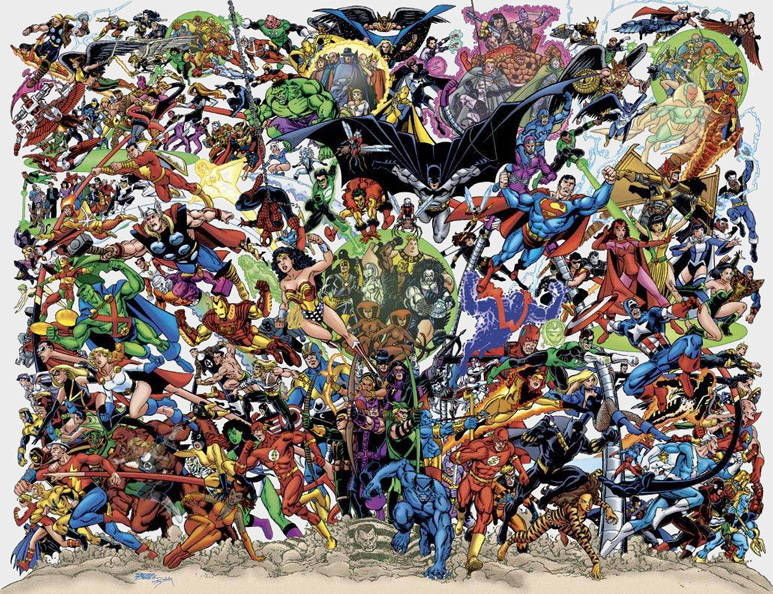As a Friday the 13th special, here is my guide to [spooky] object-oriented programming for dummies. Regardless of whether or not you are a dummy in this subject, I hope this post explains why it makes sense to code in an object-oriented fashion. I will talk about the main concepts in OOP using simple analogies to fictional characters. I won’t be including any code, mainly because this is meant to be an intuitive explanation, and should work with pretty much any OOP language.
Instances
 This character is Jason Voorhees, from the franchise Friday the 13th. He is an example of a fictional character. Of course, there are many similar characters, such as Freddy Krueger and Michael Myers. In programming, we usually call each specific character an instance, or an object; you can think of them as concrete examples of a certain type of character. Each one of these characters has specific attributes, and we programmers specify them like this:
This character is Jason Voorhees, from the franchise Friday the 13th. He is an example of a fictional character. Of course, there are many similar characters, such as Freddy Krueger and Michael Myers. In programming, we usually call each specific character an instance, or an object; you can think of them as concrete examples of a certain type of character. Each one of these characters has specific attributes, and we programmers specify them like this:
Properties

Properties are the various things that make each character, or instance, different from others. In the case of the characters we have already mentioned, each has several characteristics that make them different to each other, such as their name, origin, and immortality.
A good thing to keep in mind while understanding object-oriented programming is that programmers are lazy. We will usually avoid having to write similar code twice; therefore, although each one of these characters is slightly different from the others, it is possible to write code that describes all of them by simply storing their differences as variables, which we call properties. Similarly, all of the characters mentioned can do very similar things. Programmers handle actions like this:
Methods
 Horror movie characters can, among other things, dance, jump-scare, and murder. In programming, each instance has certain actions that you can have them execute. We call these methods. Additionally, we call the process of having an instance execute one of its methods a method call. For instance (see what I did there?), if
Horror movie characters can, among other things, dance, jump-scare, and murder. In programming, each instance has certain actions that you can have them execute. We call these methods. Additionally, we call the process of having an instance execute one of its methods a method call. For instance (see what I did there?), if ghoul referred to the character at your left, an example of a method call that got it to dance is ghoul.dance(). The great thing about this is that jason.dance(), freddy.dance(), and similar for other characters should work seamlessly too. In order to accomplish this, programmers group all these different characters like this:
Classes

You guessed it, each one of these characters is also an instance, and has both properties and methods. However, when we talk about characters being instances, it is important to specify what they are instances of. In this case, all of these characters are instances, or examples, of horror movie characters. Each has different, unique, properties, as we mentioned earlier; however, in general, all of them murder people and scare us in films. Given these similarities, it is often useful to group them into classes. Then, it becomes possible to define generic methods and properties for an entire class instead of having to do this for each specific character.
(Super)classes and (Sub)classes

Sometimes, programmers need to group several different classes. For example, we might want to have a general class that includes horror movie characters, along with any other fictional character. It is easy to imagine that this general class is going to be larger than any of the classes it contains. Therefore, programmers call these big, general classes super-classes, and the smaller, more specific classes inside them are analogously called sub-classes.
Why?
Imagine you had to create a program that could run several different two-player games, such as Chess and Tic-tac-toe. If the number of games was small (such as one specific game), it could make sense to write very specific code without the need for an object-oriented structure. However, imagine you had to do pretty much the same thing for two, ten, or even hundreds of games! It would definitely be tedious. It would be great if you could write code for things each game had in common only once. If only you had a super-class that was general enough to describe any two-player game, and then sub-classes that represented each specific game; if only each had the needed properties such as the rules, and methods such as a way to check if a player has won; and if only you could create instances of each sub-class each time a specific game was played, right? Well, now you can. There are a lot of OOP tutorials for each specific language out there.
Keep coding,
JC
